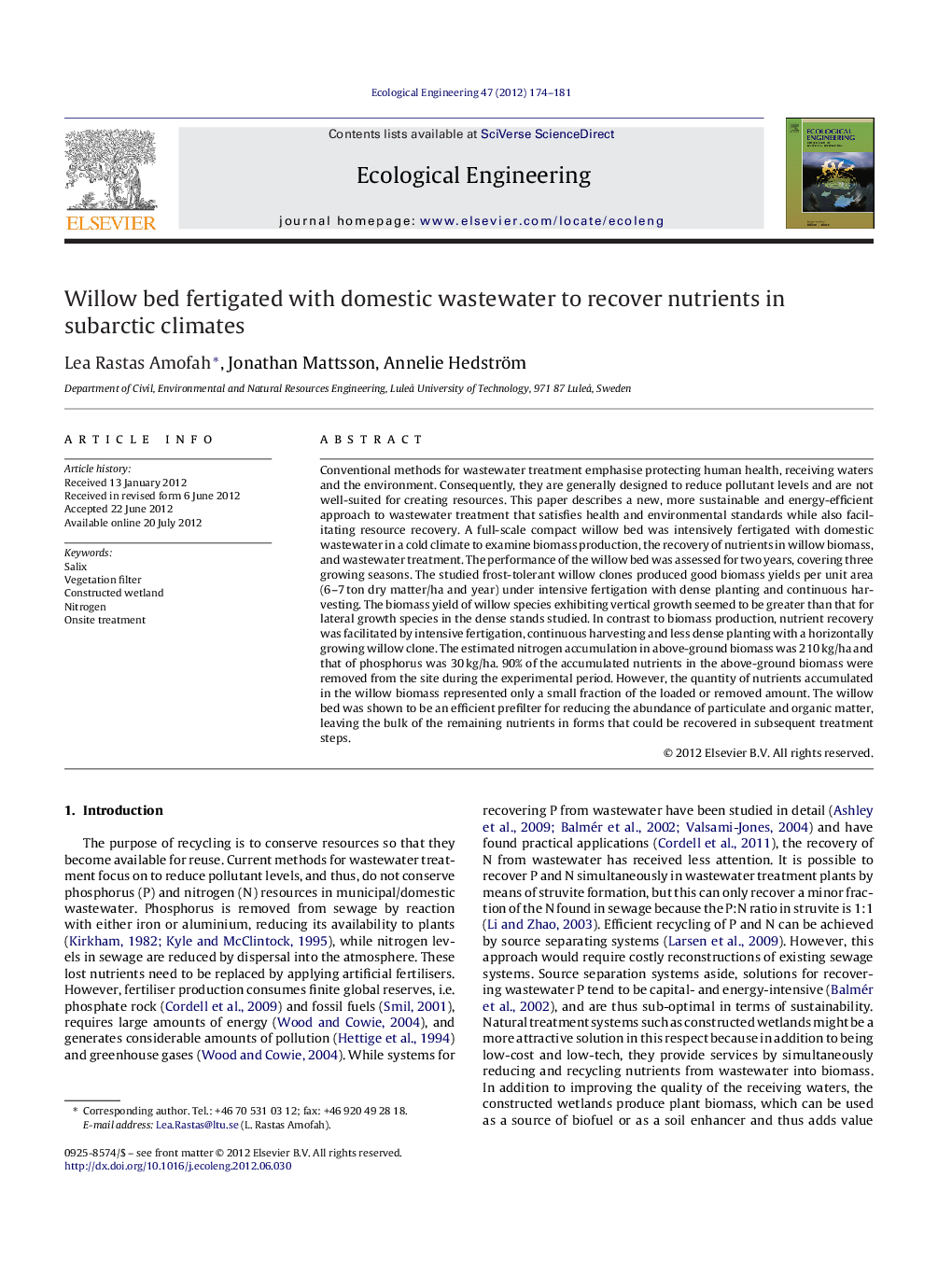| کد مقاله | کد نشریه | سال انتشار | مقاله انگلیسی | نسخه تمام متن |
|---|---|---|---|---|
| 4390016 | 1618051 | 2012 | 8 صفحه PDF | دانلود رایگان |

Conventional methods for wastewater treatment emphasise protecting human health, receiving waters and the environment. Consequently, they are generally designed to reduce pollutant levels and are not well-suited for creating resources. This paper describes a new, more sustainable and energy-efficient approach to wastewater treatment that satisfies health and environmental standards while also facilitating resource recovery. A full-scale compact willow bed was intensively fertigated with domestic wastewater in a cold climate to examine biomass production, the recovery of nutrients in willow biomass, and wastewater treatment. The performance of the willow bed was assessed for two years, covering three growing seasons. The studied frost-tolerant willow clones produced good biomass yields per unit area (6–7 ton dry matter/ha and year) under intensive fertigation with dense planting and continuous harvesting. The biomass yield of willow species exhibiting vertical growth seemed to be greater than that for lateral growth species in the dense stands studied. In contrast to biomass production, nutrient recovery was facilitated by intensive fertigation, continuous harvesting and less dense planting with a horizontally growing willow clone. The estimated nitrogen accumulation in above-ground biomass was 210 kg/ha and that of phosphorus was 30 kg/ha. 90% of the accumulated nutrients in the above-ground biomass were removed from the site during the experimental period. However, the quantity of nutrients accumulated in the willow biomass represented only a small fraction of the loaded or removed amount. The willow bed was shown to be an efficient prefilter for reducing the abundance of particulate and organic matter, leaving the bulk of the remaining nutrients in forms that could be recovered in subsequent treatment steps.
► Fertigated Salix grown in a cold climate generated good biomass yield per unit area.
► The Salix accumulated 210 kg N/ha and 30 kg P/ha in their above-ground biomass.
► ∼90% of the nutrients in the above-ground biomass could be recovered by harvesting.
► The willow bed facilitates nutrient recovery in subsequent treatment steps.
Journal: Ecological Engineering - Volume 47, October 2012, Pages 174–181